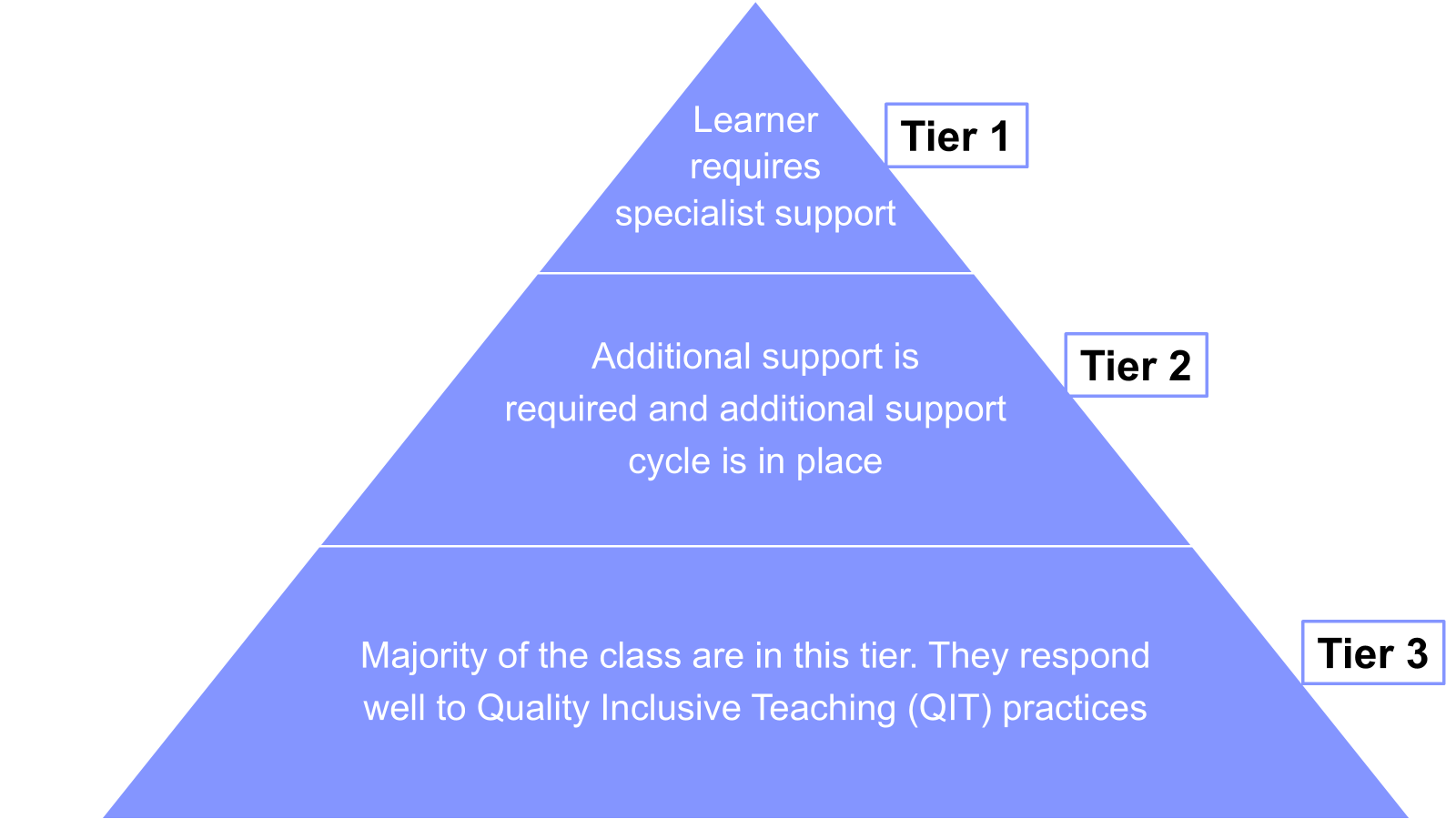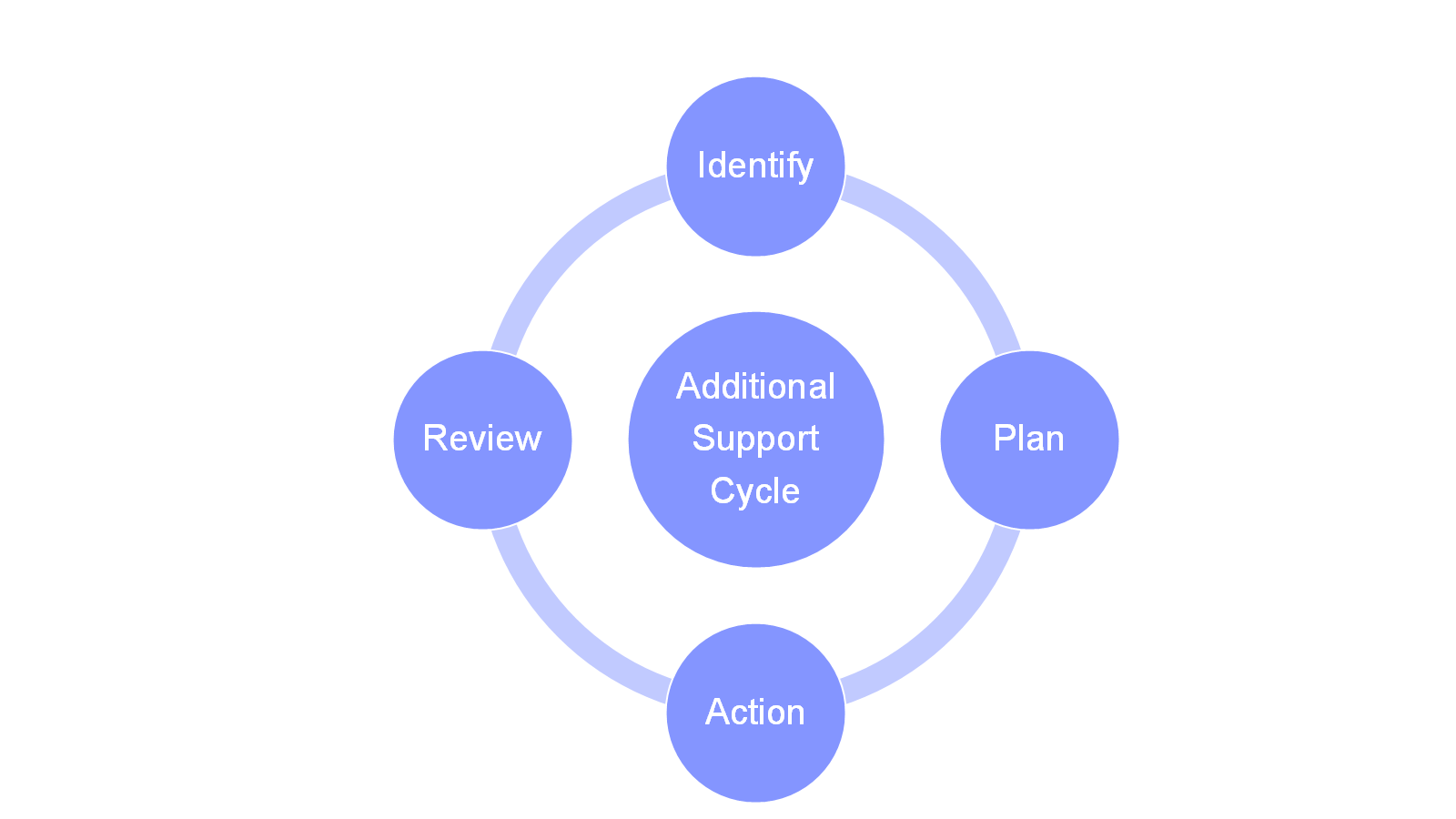Inclusive learning
A tiered approach to additional support
The amount of additional support a child requires could vary considerably for each individual, and throughout their time in education. Typically, there are three levels of support that children require:

Each of these tiers can be explained as follows:
Tier 1
Most children’s needs can be supported through Quality Inclusive Teaching (QIT) practice. Within the group of children in Tier 1, there may be some with mild learning difficulties or physical difficulties. Quality Inclusive Teaching (QIT) practice focuses on using a variety of teaching and learning strategies that all children can access. Teaching includes clear sequenced planning, differentiation, an active learning approach, use and easy access of a variety of resources to support learning, and opportunities for development of metacognition. A further explanation of QIT and ways of including it in your teaching practice can be found here.
Tier 2
Some children require more individualised additional support than those in Tier 1. Children within this group may have moderate difficulties. A child may be identified as requiring additional support due to slower than expected progress, difficultly accessing the curriculum, or observations of persistent difficulties from parents, carers and/or other adults. The child may or may not have a certified diagnosis. Additional support can be given to a group of children if they are all identified with similar needs.
When barriers to learning have been identified, you should create a plan stating what support will benefit the child. This plan should include specific supporting resources, how outcomes and approaches to learning and communication may be adapted. More information on forming a plan can be seen on the next page.
Ways to support children with barriers identified in one or more of the five areas in Tier 2 can be found here.
Tier 3
There may be some children in your setting who have a more severe learning need or disability and need specialised support. These children will probably arrive in your setting with their barriers to learning already identified. Professionals may already be assigned to offer specialised support. This specialised support should be in place in order that a child can access and participate in the classroom and can progress with the curriculum alongside children in Tiers 1 and 2. Depending on your setting, this may mean that an extra adult is required to help reduce a child's barrier to learning. If a child has a severe learning need or disability, advice needs to be given by a qualified specialised professional.
RememberIt is very important that a child is not labelled as SEND, or having a particular learning need, without following the correct processes in place. and A child can move from tier to tier as they progress through the education system.
|
Schools can use the following cycle of Identify – Plan - Action - Review to ensure the correct support is in place, and that the correct decisions are made:

This cycle should be used for those children:
- who need additional support
- where quality inclusive teaching is not removing their barriers to learning - therefore they fall into Tier 2 or 3.
This cycle is described in more detail on the next page.